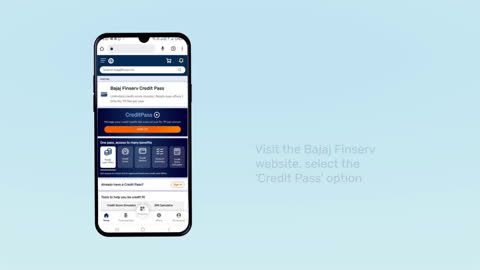PAN (Permanent Account Number) is an essential document for financial transactions and identity verification in India. With the introduction of e-PAN and PAN 2.0, the process of obtaining, using, and securing PAN cards has become more streamlined and user-friendly. PAN 2.0 incorporates advanced features like QR codes for instant verification and enhanced security. Whether applying for an e-PAN via NSDL or exploring the key features of PAN 2.0, it is essential to understand these updates for seamless financial management. This guide explains the steps to apply for e-PAN, the features of PAN 2.0, and its importance in the digital era.
Steps to apply for e-PAN via NSDL
Applying for an e-PAN through NSDL is a straightforward process. Ensure you have your Aadhaar number and linked mobile number before beginning.
- Visit the NSDL Portal: Go to www.tin-nsdl.com and select the "Apply for e-PAN" option.
- Choose Application Type: Select “New PAN” or “Reprint e-PAN” based on your requirement.
- Enter Aadhaar Details: Provide your Aadhaar number for verification.
- Authenticate with OTP: Complete Aadhaar-based authentication using the OTP sent to your mobile number.
- Fill Personal Details: Enter your name, date of birth, and contact details as per Aadhaar records.
- Make Payment: Pay the e-PAN fee using online payment methods.
- Download e-PAN: Once processed, you can download your e-PAN in PDF format from the portal.
This process is efficient and ensures quick issuance of e-PAN.
PAN 2.0 key features
PAN 2.0 introduces advanced features that improve usability, security, and integration with digital systems.
- QR Code: Contains encrypted details like name, PAN number, and date of birth for instant verification.
- Enhanced Security: Minimises risks of forgery with digital authentication.
- Durable Design: Features high-quality material for better longevity of physical cards.
- e-PAN Availability: Offers a digital version, reducing dependency on physical cards.
- Seamless Aadhaar Integration: Links easily with Aadhaar for streamlined identity verification.
- Eco-Friendly Option: Promotes the use of e-PAN to reduce environmental impact.
- Support for Digital Transactions: Ensures compatibility with e-governance and online financial systems.
These features make PAN 2.0 a modernised tool, supporting India’s vision for a digital financial ecosystem.
Importance of QR codes in PAN cards
QR codes in PAN cards play a vital role in improving security and usability for financial and identity verification purposes.
- Instant Data Retrieval: QR codes store encrypted details like name, PAN number, and date of birth for quick access.
- Fraud Prevention: Ensures authenticity and prevents tampering or duplication.
- Efficient Verification: Reduces manual errors during identity checks by enabling instant digital authentication.
- Digital Integration: Facilitates seamless connection with e-governance platforms and financial systems.
- Ease of Use: Simplifies verification processes with the use of smartphones or scanners.
- Long-Term Reliability: Supports advancements in digital verification technology.
- Enhanced User Experience: Provides a secure and user-friendly method for validating PAN details.
QR codes make PAN cards more reliable and ensure secure participation in financial and legal systems.
Is it important to replace old PAN with new PAN Card under PAN 2.0?
Replacing old PAN cards with PAN 2.0 is not mandatory but is beneficial for added features and security.
- Old PAN Validity: Existing PAN cards remain valid for all financial and legal transactions.
- Advanced Features: PAN 2.0 includes QR codes for instant verification, offering improved functionality.
- Digital Compatibility: Aligns with e-governance and digital financial platforms.
- Eco-Friendly Options: Encourages the use of e-PAN to minimise environmental impact.
- Optional Upgrade: Users can voluntarily opt for PAN 2.0 to leverage its enhanced features.
- Mandatory for New Applicants: All new PAN cards are issued in the PAN 2.0 format.
- Improved User Experience: Provides faster and more secure verification methods.
While replacing old PAN cards is not necessary, upgrading ensures access to the latest features and a more secure financial identification system.
Conclusion
PAN 2.0 and e-PAN represent significant advancements in India’s financial documentation system. By incorporating features like QR codes and offering digital options, these upgrades ensure better security, usability, and integration with modern systems. While replacing old PAN cards is optional, understanding the features and benefits of PAN 2.0 is essential for seamless financial management. Whether applying for e-PAN or upgrading to PAN 2.0, the processes are designed to be simple and efficient. Staying updated with these advancements empowers citizens to participate effectively in India’s digitised economy, promoting transparency and security in financial transactions.




